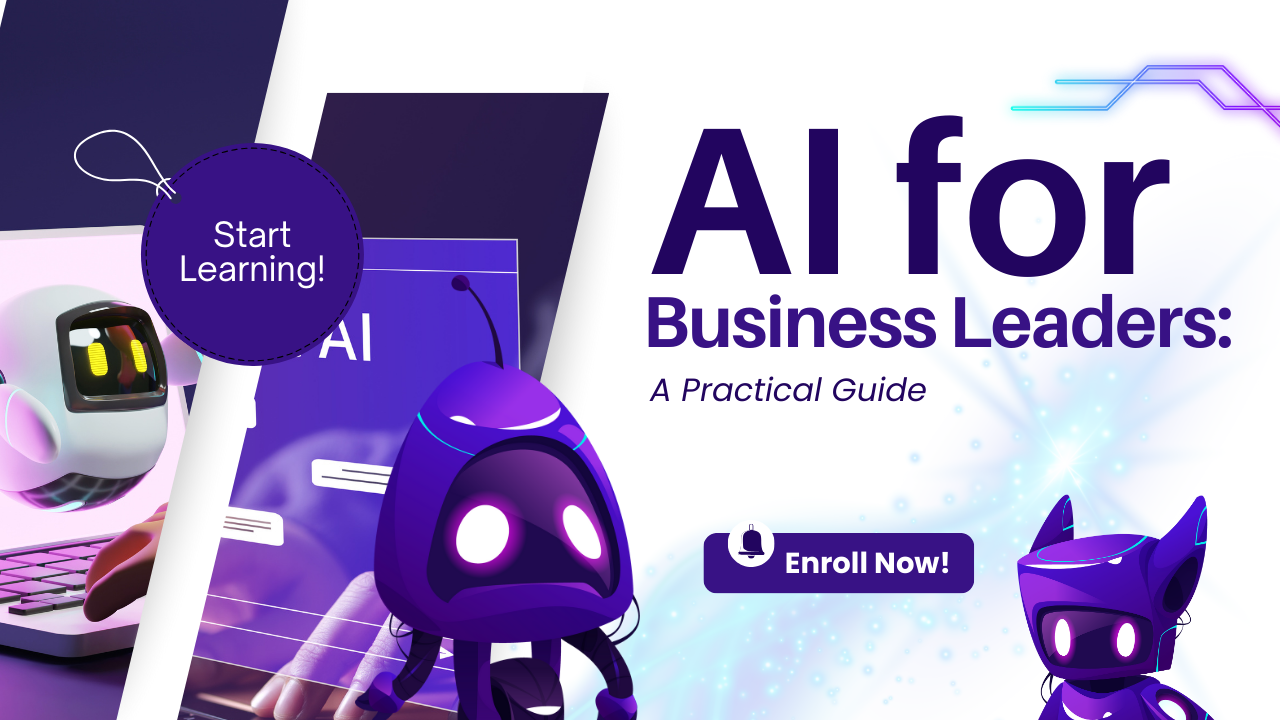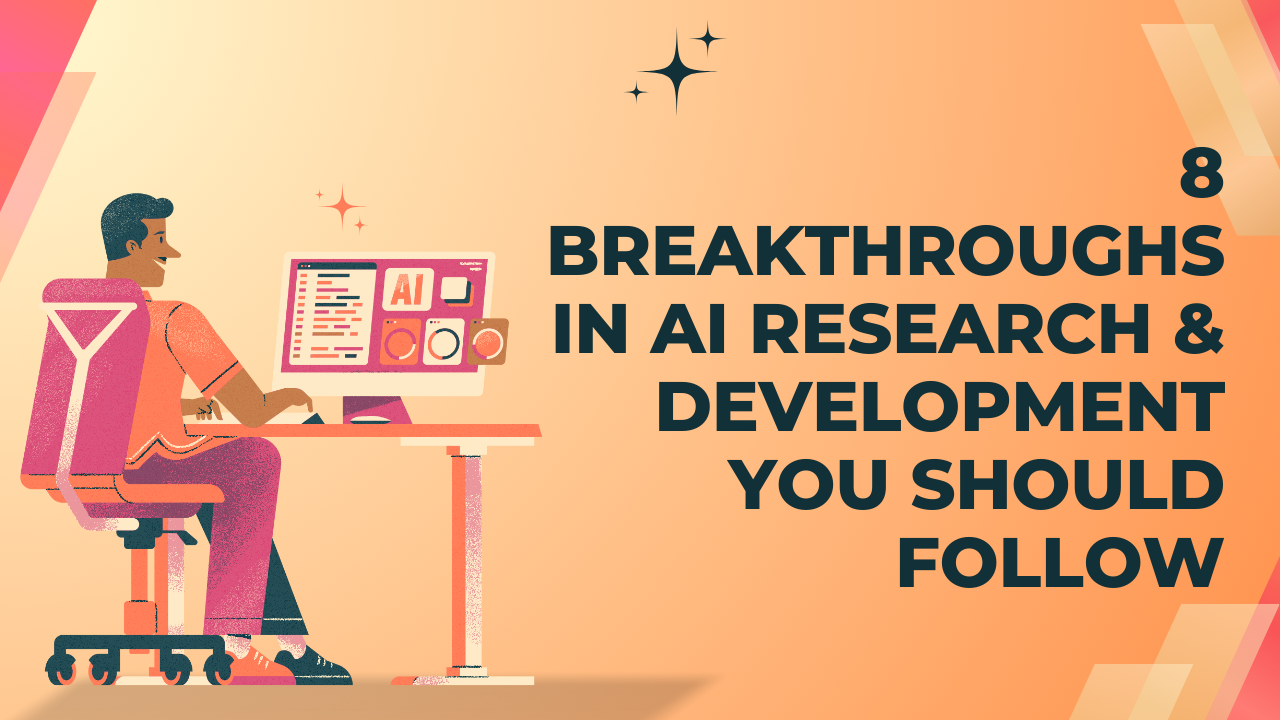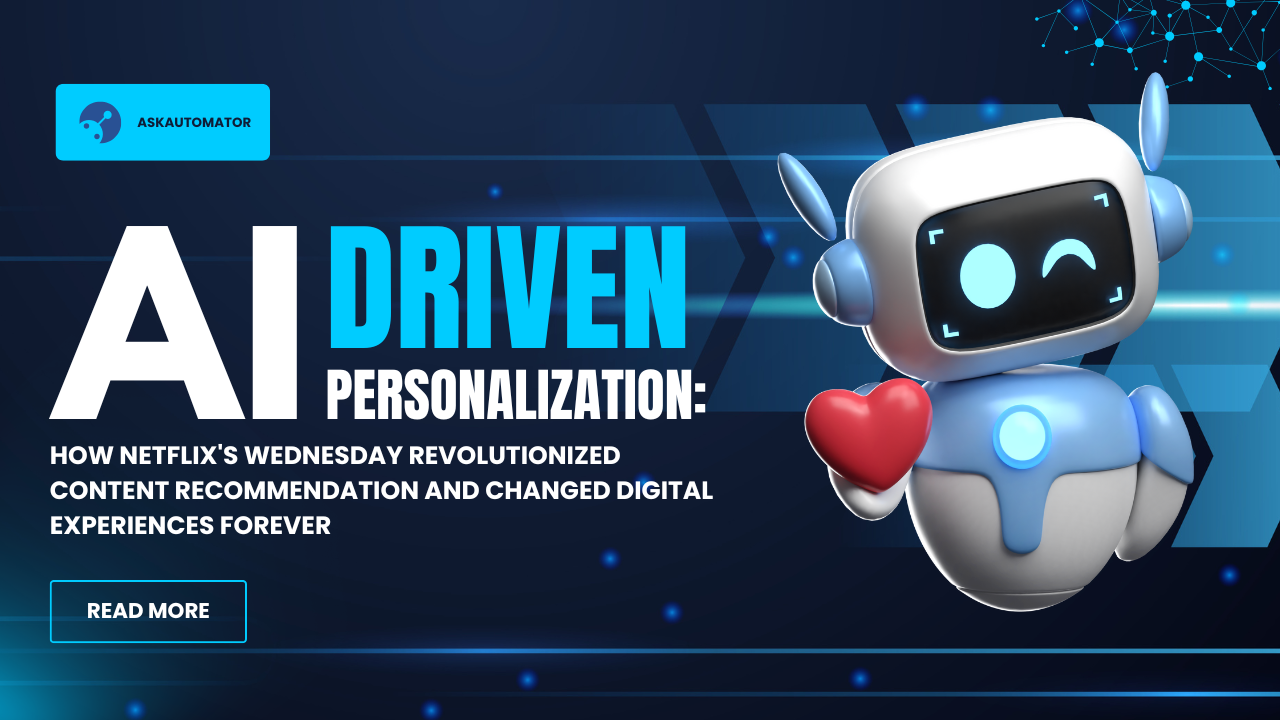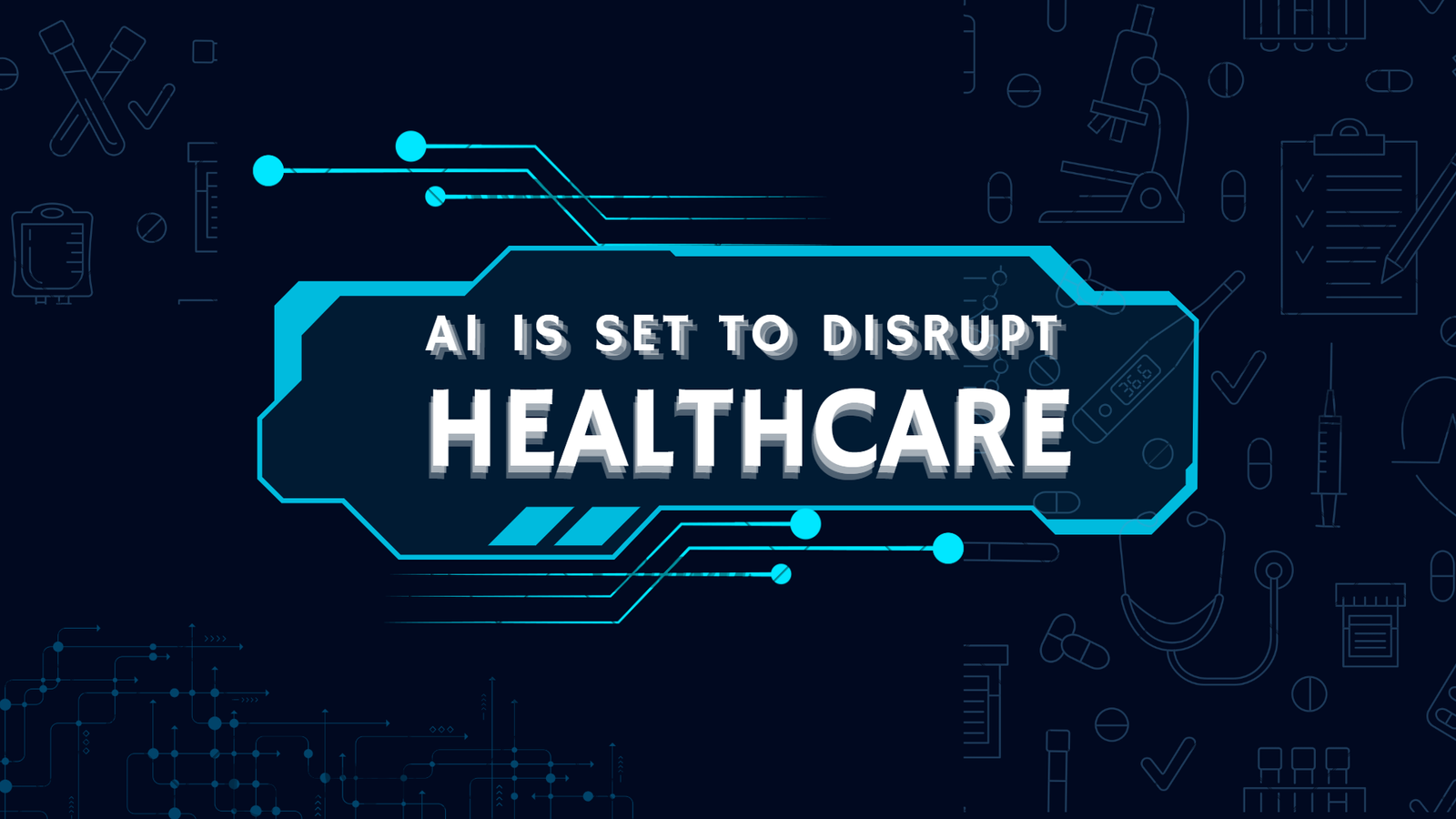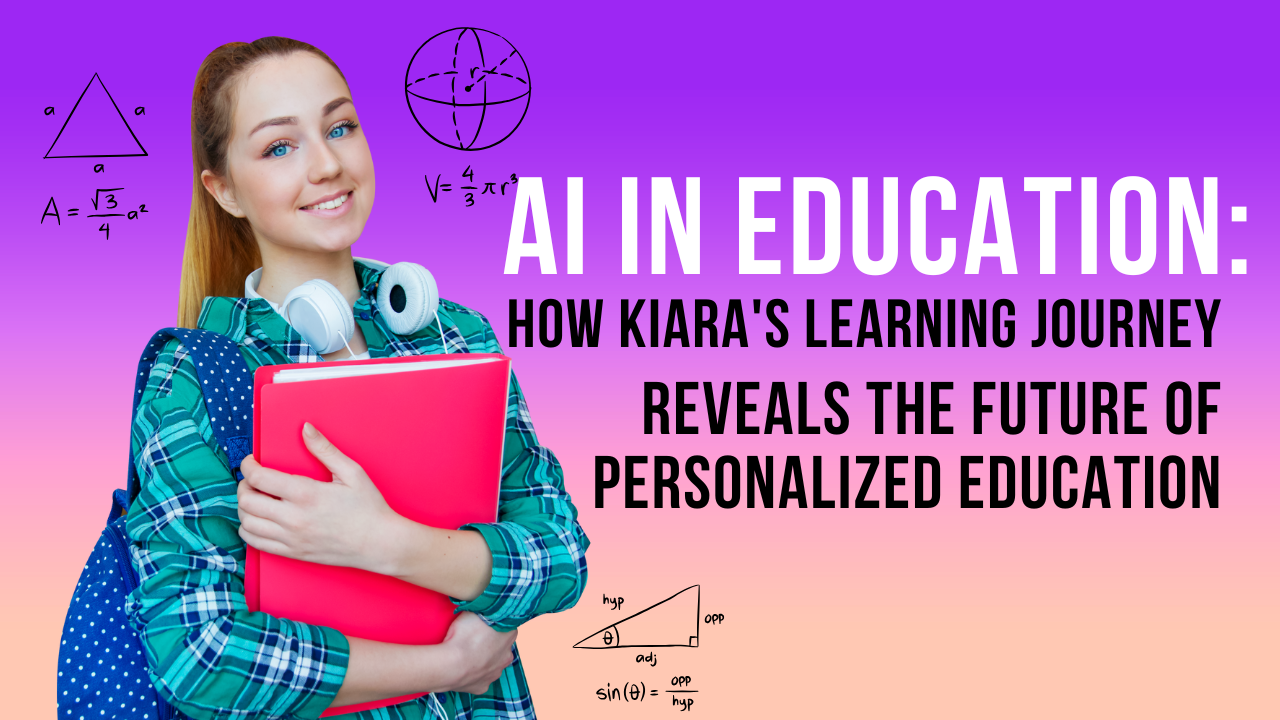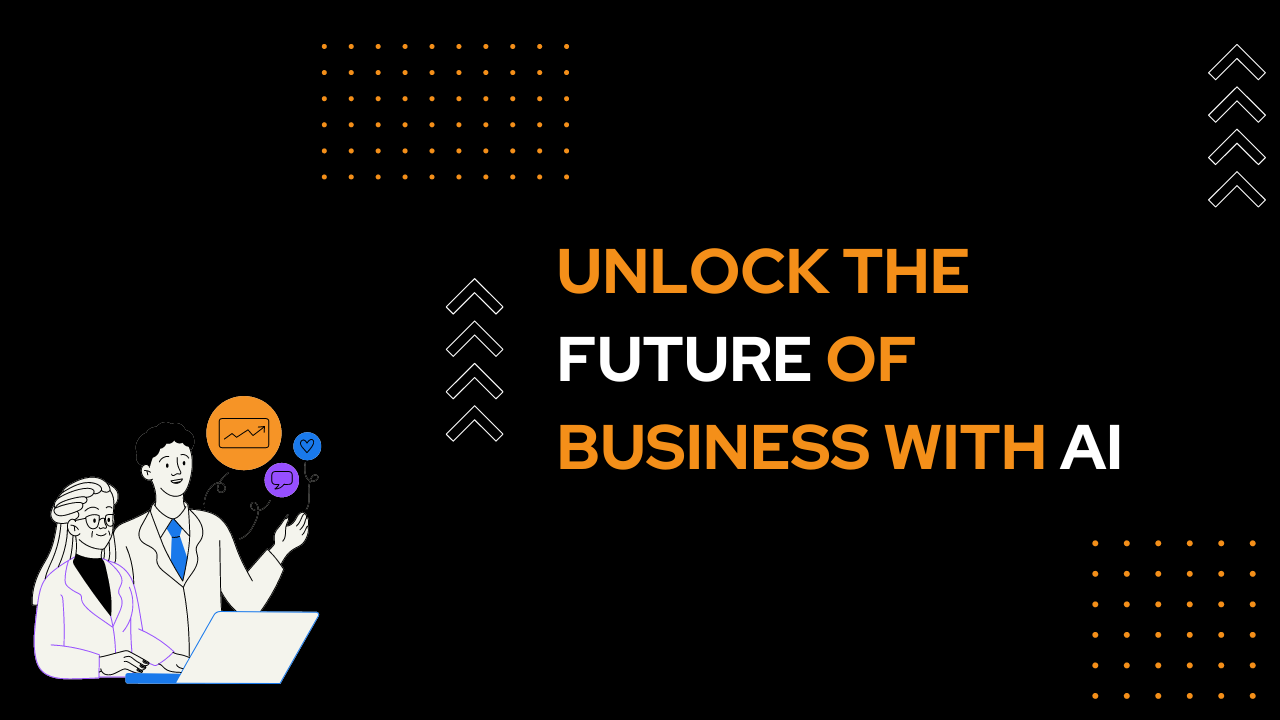In the rapidly evolving landscape of artificial intelligence, breakthroughs are happening at an unprecedented pace. As we stand on the cusp of a new era in technology, it’s crucial to stay informed about the latest advancements that are shaping our future. This blog post delves into eight groundbreaking developments in AI research and development that are poised to revolutionize industries, transform our daily lives, and push the boundaries of what’s possible.
From quantum computing integration to ethical AI frameworks, these innovations represent the cutting edge of human ingenuity and computational power. Whether you’re an AI enthusiast, a tech professional, or simply curious about the future of technology, these breakthroughs offer a glimpse into the exciting possibilities that lie ahead.
Join us as we explore these fascinating advancements, their potential applications, and the impact they’re likely to have on our world. Buckle up for a journey through the frontiers of AI – it’s going to be an exhilarating ride!
Now, let’s dive into each of these breakthroughs in detail.
1. Quantum-Enhanced Machine Learning

The convergence of quantum computing and machine learning is ushering in a new era of computational power and problem-solving capabilities. This breakthrough, known as Quantum Machine Learning (QML), leverages the principles of quantum mechanics to process and analyze data at speeds unattainable by classical computers.
How It Works
Quantum-enhanced machine learning utilizes the unique properties of quantum systems, such as superposition and entanglement, to perform complex calculations and optimize machine learning algorithms. By representing data in quantum states, these systems can explore multiple possibilities simultaneously, leading to exponential speedups in certain computational tasks.
Key Advancements
- Quantum Neural Networks: Researchers have developed quantum versions of neural networks that can process information in ways that classical neural networks cannot, potentially leading to more powerful and efficient AI models.
- Quantum Support Vector Machines: These quantum algorithms have shown promise in classification tasks, outperforming classical SVMs in certain scenarios.
- Quantum Approximate Optimization Algorithm (QAOA): This hybrid quantum-classical algorithm has demonstrated potential in solving complex optimization problems more efficiently than classical methods.
Potential Applications
- Financial Modeling: Quantum-enhanced machine learning could revolutionize risk assessment, portfolio optimization, and fraud detection in the financial sector.
- Drug Discovery: By simulating molecular interactions more accurately, QML could accelerate the process of identifying potential new drugs and therapies.
- Climate Modeling: Complex climate systems could be modeled more precisely, leading to better predictions and mitigation strategies.
Challenges and Future Outlook
While the potential of quantum-enhanced machine learning is immense, significant challenges remain. These include the need for more stable and scalable quantum hardware, the development of quantum-resistant encryption methods, and the training of a workforce skilled in both quantum computing and machine learning.
As quantum technologies continue to mature, we can expect to see more practical applications of QML emerging in the coming years. This breakthrough has the potential to solve complex problems that are currently intractable, opening up new frontiers in scientific discovery and technological innovation.
Learn more about Quantum Machine Learning
2. Neuro-Symbolic AI

Neuro-symbolic AI represents a groundbreaking approach that combines the strengths of neural networks with symbolic reasoning, bridging the gap between data-driven learning and logic-based inference. This hybrid approach aims to create AI systems that can both learn from data and reason about abstract concepts, potentially leading to more robust and interpretable AI models.
The Concept
Traditional deep learning models excel at pattern recognition but often struggle with tasks requiring logical reasoning or the application of explicit rules. Symbolic AI, on the other hand, is adept at logical reasoning but lacks the flexibility to learn from unstructured data. Neuro-symbolic AI seeks to combine these approaches, creating systems that can learn, reason, and explain their decision-making processes.
Key Components
- Neural Networks: Provide the learning and pattern recognition capabilities.
- Symbolic Systems: Incorporate logical rules and domain knowledge.
- Integration Layer: Combines neural and symbolic components, allowing for bidirectional information flow.
Recent Advancements
- Concept Learning: Researchers have developed neuro-symbolic models that can learn abstract concepts from limited examples, a task that has traditionally been challenging for pure neural network approaches.
- Causal Reasoning: By incorporating symbolic knowledge, these systems can better understand and reason about cause-and-effect relationships.
- Explainable AI: The symbolic component allows for more transparent decision-making processes, addressing the “black box” problem of traditional deep learning models.
Potential Applications
- Natural Language Processing: Enhancing language understanding by combining learned patterns with grammatical rules and semantic knowledge.
- Robotic Control: Improving robot decision-making by integrating learned behaviors with explicit safety rules and constraints.
- Healthcare Diagnostics: Combining data-driven disease detection with medical knowledge bases for more accurate and explainable diagnoses.
Challenges and Future Directions
While promising, neuro-symbolic AI faces several challenges:
- Seamless integration of neural and symbolic components.
- Scalability to complex, real-world problems.
- Developing standardized frameworks and tools for neuro-symbolic AI development.
As research progresses, we can expect to see more sophisticated neuro-symbolic systems that can handle increasingly complex tasks while maintaining interpretability and robustness. This breakthrough has the potential to address some of the key limitations of current AI systems, bringing us closer to artificial general intelligence (AGI).
Explore more about Neuro-Symbolic AI
3. Federated Learning for Privacy-Preserving AI

In an era where data privacy and security are paramount concerns, federated learning has emerged as a groundbreaking approach to developing AI models while protecting sensitive information. This innovative technique allows for the training of machine learning models on distributed datasets without the need to centralize the data, addressing critical privacy and regulatory challenges.
The Concept
Federated learning enables multiple parties to collaboratively train a shared model while keeping their data locally. Instead of sharing raw data, only model updates are exchanged, significantly reducing the risk of data breaches and ensuring compliance with data protection regulations like GDPR.
How It Works
- A central server initiates the process by sharing an initial model with participating devices or organizations.
- Each participant trains the model on their local data.
- Only the model updates (not the raw data) are sent back to the central server.
- The server aggregates these updates to improve the global model.
- The process repeats iteratively until the model reaches desired performance.
Key Advancements
- Secure Aggregation: Cryptographic techniques ensure that individual updates cannot be reverse-engineered to reveal sensitive information.
- Differential Privacy: Adding controlled noise to model updates further protects individual privacy while maintaining overall model utility.
- Cross-Silo Federated Learning: Enabling collaboration between organizations (e.g., hospitals) while keeping data within their respective secure environments.
Potential Applications
- Healthcare: Developing AI models across multiple hospitals without sharing patient data.
- Finance: Collaborative fraud detection systems that respect bank secrecy laws.
- Edge Computing: Training AI models on mobile devices without uploading personal data to the cloud.
Challenges and Future Outlook
While federated learning offers significant privacy benefits, it also faces challenges:
- Communication efficiency in large-scale federated systems.
- Dealing with non-IID (Independent and Identically Distributed) data across participants.
- Ensuring model convergence and performance in heterogeneous environments.
As these challenges are addressed, we can expect to see wider adoption of federated learning across industries, enabling more collaborative AI development while maintaining strong privacy guarantees. This breakthrough has the potential to unlock valuable insights from previously inaccessible data silos, accelerating innovation in fields where data privacy is critical.
Learn more about Federated Learning
4. AI-Driven Drug Discovery and Development

The intersection of artificial intelligence and pharmaceutical research has given rise to a revolutionary approach in drug discovery and development. This breakthrough is dramatically accelerating the process of identifying potential new therapies, optimizing drug candidates, and even predicting drug efficacy and side effects.
The AI Advantage in Drug Discovery
Traditional drug discovery is a time-consuming and expensive process, often taking over a decade and billions of dollars to bring a new drug to market. AI-driven approaches are transforming this landscape by:
- Analyzing vast databases of biological and chemical information at unprecedented speeds.
- Identifying patterns and relationships that might be missed by human researchers.
- Predicting the properties and behaviors of potential drug candidates more accurately.
Key Technologies and Approaches
- Machine Learning Models: Used to predict compound properties, toxicity, and efficacy.
- Deep Learning: Employed in analyzing complex biological data, including genomics and proteomics.
- Natural Language Processing: Helps in mining scientific literature and clinical trial data for valuable insights.
- Generative AI: Creates novel molecular structures with desired properties.
Recent Breakthroughs
- AI-Designed Antibiotics: Researchers have used AI to discover a new antibiotic effective against drug-resistant bacteria, a process that took mere hours compared to traditional methods.
- Protein Folding Prediction: DeepMind’s AlphaFold has revolutionized the understanding of protein structures, a crucial aspect of drug design.
- Personalized Medicine: AI models are being developed to predict individual patient responses to drugs based on genetic and other biomarkers.
Potential Impact
- Faster Drug Development: Reducing the time from discovery to clinical trials.
- Cost Reduction: Lowering the astronomical costs associated with drug development.
- Rare Disease Treatment: Accelerating the discovery of therapies for rare diseases that might otherwise be overlooked.
- Repurposing Existing Drugs: Identifying new uses for approved drugs.
Challenges and Ethical Considerations
While promising, AI-driven drug discovery also faces challenges:
- Ensuring the quality and diversity of training data.
- Validating AI predictions in real-world clinical settings.
- Addressing potential biases in AI models.
- Navigating regulatory frameworks for AI-discovered drugs.
As these challenges are addressed, AI-driven drug discovery has the potential to revolutionize healthcare, bringing life-saving treatments to patients faster and more efficiently than ever before. This breakthrough represents a convergence of computational power, biological understanding, and machine learning that could usher in a new era of medical innovation.
Explore more about AI in Drug Discovery
5. Multimodal AI Systems

Multimodal AI represents a significant leap forward in artificial intelligence, moving beyond single-domain expertise to systems that can integrate and process information from multiple sources or “modalities.” This breakthrough is bringing us closer to AI that can understand and interact with the world in ways that more closely mimic human cognition.
Multimodal AI
Multimodal AI systems are designed to process and analyze data from various input types simultaneously, such as:
- Text
- Images
- Audio
- Video
- Sensor data
By combining these different modalities, these systems can gain a more comprehensive understanding of complex scenarios, leading to more accurate and context-aware AI applications.
Key Advancements
- Cross-Modal Learning: Techniques that allow AI to transfer knowledge between different modalities, enhancing overall performance.
- Fusion Strategies: Advanced methods for combining information from multiple modalities at various levels of processing.
- Attention Mechanisms: Enabling AI to focus on the most relevant aspects of multimodal inputs.
- Multimodal Transformers: Extending the powerful transformer architecture to handle multiple types of input data.
Breakthrough Applications
- Visual Question Answering (VQA): Systems that can answer questions about images, combining natural language processing with computer vision.
- Multimodal Sentiment Analysis: Analyzing text, speech, and facial expressions to better understand human emotions and intentions.
- Cross-Modal Retrieval: Searching for images using text queries or vice versa, enhancing information retrieval capabilities.
- Robotics: Enabling robots to understand and interact with their environment using multiple sensory inputs.
Potential Impact
- Enhanced Human-AI Interaction: More natural and context-aware interfaces between humans and AI systems.
- Improved Accessibility: Technologies that can translate between different modalities, such as automatic image captioning for visually impaired users.
- Advanced Security Systems: Multimodal biometric authentication combining facial recognition, voice analysis, and behavior patterns.
- Healthcare Diagnostics: Integrating various types of medical data (imaging, lab results, patient history) for more accurate diagnoses.
Challenges and Future Directions
While promising, multimodal AI faces several challenges:
- Data Alignment: Ensuring proper synchronization and correlation between different modalities.
- Scalability: Handling the increased computational demands of processing multiple data types.
- Interpretability: Understanding how decisions are made across different modalities.
- Bias Mitigation: Addressing potential biases that may arise from combining multiple data sources.
As research progresses, we can expect to see increasingly sophisticated multimodal AI systems that can handle more complex tasks and interactions. This breakthrough has the potential to bring AI closer to human-like perception and reasoning, opening up new possibilities across various fields, from healthcare to entertainment and beyond.
Learn more about Multimodal AI
6. Ethical AI and Responsible Development Frameworks

As artificial intelligence becomes increasingly integrated into our daily lives and critical systems, the need for ethical considerations and responsible development practices has never been more pressing. This breakthrough focuses on the creation and implementation of frameworks that ensure AI systems are developed and deployed in ways that are fair, transparent, and beneficial to society.
The Importance of Ethical AI
Ethical AI frameworks aim to address several key concerns:
- Bias and Fairness: Ensuring AI systems do not perpetuate or amplify existing societal biases.
- Transparency and Explainability: Making AI decision-making processes understandable to humans.
- Privacy and Data Protection: Safeguarding individual privacy rights in the age of big data.
- Accountability: Establishing clear lines of responsibility for AI-driven decisions.
- Safety and Robustness: Ensuring AI systems perform reliably and safely in various scenarios.
Key Developments in Ethical AI
- AI Ethics Guidelines: Major tech companies, academic institutions, and governments have developed comprehensive guidelines for ethical AI development.
- Algorithmic Impact Assessments: Tools and methodologies for evaluating the potential societal impacts of AI systems before deployment.
- Fairness-Aware Machine Learning: Techniques to detect and mitigate biases in AI models and training data.
- Explainable AI (XAI): Methods to make complex AI models more interpretable and their decisions more transparent.
- Privacy-Preserving AI: Technologies like federated learning and differential privacy that enable AI development while protecting individual data.
Breakthrough Initiatives
- IEEE Global Initiative on Ethics of Autonomous and Intelligent Systems: Developing standards for ethical AI design.
- EU’s Ethics Guidelines for Trustworthy AI: A comprehensive framework for ensuring AI systems are lawful, ethical, and robust.
- AI for Good: A United Nations initiative promoting AI applications that support sustainable development goals.
- OpenAI’s Charter: Principles guiding the development of advanced AI systems to benefit humanity.
Potential Impact
- Trust in AI Systems: Increasing public confidence in AI-driven technologies and decisions.
- Regulatory Compliance: Helping organizations navigate evolving AI regulations and standards.
- Societal Benefit: Ensuring AI advancements contribute positively to society and human well-being.
- Sustainable Innovation: Promoting long-term, responsible growth in AI technology that aligns with human values and societal needs.
- Global Collaboration: Fostering international cooperation on AI governance and ethical standards.
Challenges and Future Directions
While significant progress has been made in ethical AI frameworks, several challenges remain:
- Implementation Gap: Translating ethical guidelines into practical, enforceable standards.
- Cultural Differences: Reconciling varying ethical perspectives across different cultures and societies.
- Rapid Technological Advancement: Keeping ethical frameworks up-to-date with fast-paced AI developments.
- Balancing Innovation and Regulation: Ensuring ethical guidelines don’t stifle beneficial AI innovations.
As research and development in ethical AI continue, we can expect to see:
- More sophisticated tools for bias detection and mitigation in AI systems.
- Increased integration of ethical considerations into AI education and training programs.
- The emergence of AI ethics auditing as a standardized practice in technology development.
- Greater collaboration between technologists, ethicists, policymakers, and other stakeholders in shaping AI governance.
This breakthrough in ethical AI and responsible development frameworks is crucial for building a future where AI technologies are not only powerful but also trustworthy, fair, and aligned with human values. As these frameworks evolve and mature, they will play a vital role in shaping the trajectory of AI development and its impact on society.
Explore more about Ethical AI Frameworks
7. AI in Climate Change Modeling and Mitigation

The application of artificial intelligence to climate science represents a significant breakthrough in our ability to understand, predict, and mitigate the effects of climate change. This innovative approach combines the power of machine learning with vast amounts of climate data to generate more accurate models and develop effective strategies for environmental protection.
The Role of AI in Climate Science
AI is transforming climate research and action in several key ways:
- Enhanced Climate Modeling: AI algorithms can process and analyze complex climate data more efficiently than traditional methods, leading to more accurate and detailed climate models.
- Improved Predictions: Machine learning models can identify patterns and trends in climate data that might be missed by human researchers, enabling more precise predictions of future climate scenarios.
- Optimized Resource Management: AI can help optimize the use of resources like water and energy, reducing waste and emissions.
- Smart Grid Management: AI algorithms can balance energy supply and demand more efficiently, facilitating the integration of renewable energy sources.
Key Advancements
- Deep Learning for Climate Projections: Neural networks trained on historical climate data can generate high-resolution climate projections at a fraction of the computational cost of traditional methods.
- AI-Powered Earth System Models: Integrating machine learning into Earth system models to improve the representation of complex processes like cloud formation and ocean currents.
- Satellite Image Analysis: AI techniques for analyzing satellite imagery to monitor deforestation, ice melt, and other environmental changes at a global scale.
- Extreme Weather Prediction: Machine learning models that can predict extreme weather events with greater accuracy and lead time.
Potential Applications
- Agriculture: AI-driven climate models can help farmers adapt to changing conditions and optimize crop yields.
- Urban Planning: Climate-aware AI systems can assist in designing more resilient and sustainable cities.
- Biodiversity Conservation: AI can track and predict changes in ecosystems, aiding conservation efforts.
- Emissions Reduction: Machine learning algorithms can optimize industrial processes to reduce greenhouse gas emissions.
Challenges and Future Outlook
While AI holds great promise for climate change modeling and mitigation, several challenges remain:
- Data Quality and Availability: Ensuring access to high-quality, comprehensive climate data from around the globe.
- Model Interpretability: Developing AI models that not only make accurate predictions but also provide insights into the underlying climate processes.
- Computational Resources: Balancing the need for complex AI models with the goal of reducing energy consumption and carbon footprint.
- Interdisciplinary Collaboration: Fostering cooperation between climate scientists, AI researchers, policymakers, and other stakeholders.
As these challenges are addressed, we can expect to see AI playing an increasingly central role in climate change research and mitigation strategies. This breakthrough has the potential to accelerate our understanding of climate systems and empower more effective, data-driven responses to one of the most pressing challenges of our time.
Learn more about AI in Climate Science
8. Brain-Computer Interfaces and AI

The convergence of brain-computer interfaces (BCIs) and artificial intelligence represents a frontier in neurotechnology that promises to revolutionize how we interact with computers and even augment human cognitive capabilities. This breakthrough is opening up new possibilities in healthcare, communication, and human-machine interaction.
Brain-Computer Interfaces
BCIs are systems that allow direct communication between the brain and an external device. When combined with AI, these systems can:
- Interpret complex brain signals more accurately.
- Adapt to individual users over time.
- Enable more intuitive and responsive control of external devices.
- Potentially enhance cognitive functions or restore lost abilities.
Key Advancements
- Non-Invasive BCIs: Development of high-resolution EEG and other non-invasive technologies for brain signal acquisition.
- AI-Powered Signal Processing: Advanced machine learning algorithms for decoding and interpreting brain signals in real-time.
- Adaptive Neural Interfaces: AI systems that can learn and adapt to changes in brain signals over time, improving long-term performance.
- Bidirectional BCIs: Systems that not only read brain signals but also send information back to the brain, opening up possibilities for enhanced sensory feedback.
Breakthrough Applications
- Neuroprosthetics: AI-enhanced BCIs enabling more natural control of prosthetic limbs.
- Communication Aids: Systems allowing individuals with severe motor disabilities to communicate through thought alone.
- Cognitive Enhancement: Potential applications in improving memory, focus, or learning abilities.
- Neurorehabilitation: AI-driven BCIs assisting in recovery from stroke or other neurological conditions.
Potential Impact
- Healthcare Revolution: Transforming the treatment and management of neurological disorders.
- Human Augmentation: Potential to enhance human cognitive abilities and create more intuitive human-machine interfaces.
- Immersive Technologies: Enabling more natural interaction with virtual and augmented reality environments.
- Neuroscientific Research: Providing new tools for understanding brain function and cognition.
Ethical Considerations and Challenges
The development of AI-enhanced BCIs raises important ethical questions and technical challenges:
- Privacy and Security: Protecting brain data and preventing unauthorized access or manipulation.
- Cognitive Liberty: Ensuring individuals maintain autonomy over their thoughts and mental processes.
- Equity and Access: Addressing potential societal disparities in access to cognitive enhancement technologies.
- Long-term Effects: Understanding the potential long-term impacts of BCI use on brain function and plasticity.
- Technical Hurdles: Improving signal quality, reducing invasiveness, and enhancing the longevity of implanted devices.
As research progresses and these challenges are addressed, we can expect to see increasingly sophisticated BCI systems that blur the line between human cognition and artificial intelligence. This breakthrough has the potential to not only transform healthcare and human-computer interaction but also to fundamentally alter our understanding of the human mind and its capabilities.
Explore more about Brain-Computer Interfaces and AI
Conclusion
The eight breakthroughs we’ve explored represent the cutting edge of AI research and development, each with the potential to reshape industries and transform our daily lives. From quantum-enhanced machine learning to brain-computer interfaces, these innovations are pushing the boundaries of what’s possible in artificial intelligence.
As we look to the future, it’s clear that the pace of AI advancement shows no signs of slowing. These breakthroughs not only promise technological progress but also raise important questions about ethics, privacy, and the very nature of human-machine interaction.
Staying informed about these developments is crucial for anyone interested in technology, whether you’re a professional in the field, a policymaker, or simply a curious observer. As AI continues to evolve, it will undoubtedly bring both challenges and opportunities. By understanding these breakthroughs, we can better prepare for and shape the AI-driven future that lies ahead.
The journey of AI research and development is an exciting one, full of potential and promise. As we stand on the brink of these technological revolutions, one thing is certain: the future of AI is limited only by our imagination and our commitment to responsible innovation.

